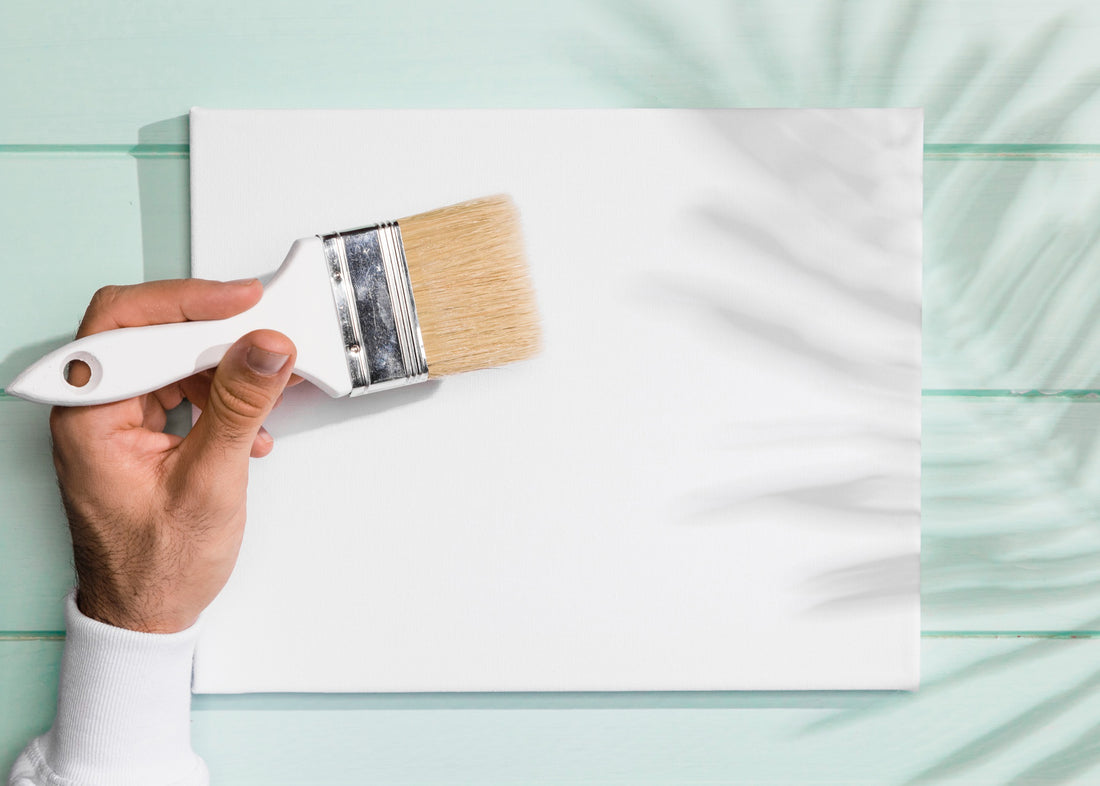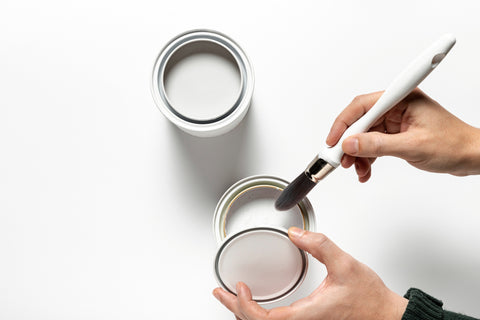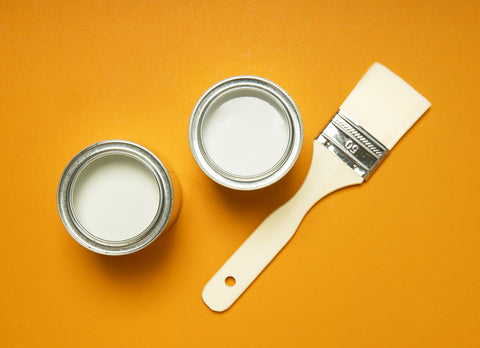
Is it Necessary to Use a Primer Before Starting a Paint by Numbers Project?
Share
Starting a new Paint by Numbers project is always an exciting journey, so naturally you want to do everything right as it is a process that requires time, patience, and attention to detail. As you prepare to bring your masterpiece to life, one question that often arises is whether using a primer is essential before diving into the painting process. So let’s take a look at the significance of primers in the realm of Paint by Numbers, and explore the benefits, drawbacks, and alternative techniques associated with their use.
What is a Primer and Why is It Used?
A primer is a preparatory coating that’s applied to a surface before the actual painting process begins. It acts as a foundation, creating a smooth and even surface for the paint to adhere to. Primers are commonly used in various forms of painting, including Paint by Numbers projects, to enhance the quality and longevity of the artwork.
The primary purpose of a primer is to provide several key benefits:
- Improved Adhesion: Applying a primer creates a bond between the surface and the paint, ensuring better adhesion. This prevents the paint from peeling, flaking, or chipping over time. Without a primer, the paint may not adhere properly to the canvas, resulting in an uneven finish.
- Enhanced Color Intensity: Primers can help intensify the colors of the paint, allowing for a more vibrant and eye-catching final result. By creating a uniform base, the primer ensures that the true colors of the paint are accurately represented.
- Surface Protection: Primers act as a protective barrier between the canvas and the paint. They help prevent the paint from seeping into the canvas fibers, thereby reducing the risk of discoloration or damage over time. This is especially important when using acrylic or oil-based paints that can have a corrosive effect on untreated surfaces.
- Smooth Surface Preparation: A primer creates a smooth and even surface by filling in any imperfections, such as cracks, bumps, or uneven textures. This ensures that the paint glides on smoothly and provides a professional-looking finish. Without a primer, the paint may highlight the flaws in the canvas, resulting in an unsatisfactory appearance.
- Increased Paint Durability: By using a primer, the paint layer becomes more durable and resistant to wear and tear. This is particularly important for Paint by Numbers projects that may be displayed or handled frequently. The primer helps protect the paint from fading, yellowing, and other forms of damage caused by environmental factors or regular use.
Overall, using a primer in a Paint by Numbers project offers numerous advantages that contribute to the overall quality and longevity of the artwork. It ensures better adhesion, enhances color intensity, provides surface protection, creates a smooth surface, and increases the durability of the paint. However, it's important to consider the type of primer used and the specific requirements of your project to achieve the best results.

Applying Primer to a Paint by Numbers Project
Now that you know the benefits of applying a primer to your Paint by Numbers project, let’s go over the process of the primer application.
The Process of Applying Primer
- Prepare the Surface: Before applying the primer, ensure that the canvas is clean and free from any dust or debris. Use a soft brush or cloth to gently remove any particles that may affect the smoothness of the surface.
- Choose the Right Primer: Select a primer that is compatible with the type of paint you will be using. There are various types of primers available, such as acrylic-based, oil-based, or water-based. Consider the specific requirements of your project and consult the instructions provided with your Paint by Numbers kit.
- Mix and Dilute (if necessary): Some primers may require mixing or dilution with water or a specific solvent. Follow the manufacturer's instructions to ensure the correct consistency and application.
- Apply the Primer: Using a brush or roller, apply an even layer of primer to the entire surface of the canvas. Work in one direction to ensure a smooth and consistent application. Pay attention to any areas that may require additional coverage, such as textured sections or heavily pigmented areas.
- Allow Drying Time: Depending on the type of primer used, drying times may vary. Follow the recommended drying time mentioned on the primer packaging. It is crucial to allow the primer to fully dry before proceeding with the painting process.
Drawbacks of Not Using a Primer
- Uneven Paint Application: Without a primer, the paint may not adhere evenly to the canvas. This can lead to a patchy or streaky appearance, detracting from the overall quality of the artwork.
- Less Vibrant Colors: Skipping the primer step may result in dull or muted colors. The paint may not fully reflect its true vibrancy, affecting the visual impact of the artwork.
- Increased Risk of Paint Damage: Without a protective primer layer, the paint is more susceptible to damage from environmental factors, handling, or aging. This can lead to fading, chipping, or deterioration of the artwork over time.
While using a primer in a Paint by Numbers project offers numerous benefits, it is essential to consider your specific project requirements and the type of paints you are using. Some artists may opt for alternative techniques or have different preferences when it comes to priming the canvas. Let's explore some alternative techniques in the next section.

Alternative Techniques to Using Primer in Paint by Numbers
While using a primer is the traditional and recommended approach for preparing a canvas before starting a Paint by Numbers project, there are alternative techniques that can be used as well. Some of these techniques can be useful in situations where a primer may not be readily available or if you prefer to experiment with different methods.
Manual Shading and Highlighting
Instead of using a primer to create a uniform base, you can opt for a more hands-on approach by manually shading and highlighting the canvas. This technique involves using different shades of paint to create depth and dimensionality directly on the canvas. By strategically layering and blending the colors, you can achieve a similar effect to priming, enhancing the vibrancy and visual impact of the artwork.
Using Multiple Paint Layers
Another alternative technique is to apply multiple layers of paint directly on the canvas. Instead of relying on a primer to create a smooth surface, you can build up layers of paint to achieve the desired texture and coverage. This technique allows for more flexibility in creating different effects, such as impasto or textured surfaces. However, it is important to note that this approach may require more time and effort compared to using a primer.
Utilizing Different Types of Paint
In some cases, artists may choose to use different types of paint that inherently provide better coverage and adhesion without the need for a primer. For example, acrylic paints are known for their strong adhesive properties and can be applied directly to the canvas without a primer. Additionally, some brands offer specialized paints specifically designed for Paint by Numbers projects, which may eliminate the need for a primer.
While these alternative techniques can be effective, it is important to keep in mind that they may not always provide the same level of protection or durability as using a primer. The use of a primer is still recommended for achieving optimal results in terms of color accuracy, paint adhesion, and surface protection. However, if you are looking to explore different artistic approaches or find yourself without access to a primer, these alternative techniques can offer viable options for your Paint by Numbers project.
In conclusion, while using a primer before starting a Paint by Numbers project may not be an absolute necessity, it offers numerous advantages that contribute to the quality and longevity of the artwork. The choice of using a primer or exploring alternative techniques ultimately depends on personal preference, experimentation, and the desired outcome of the project.
